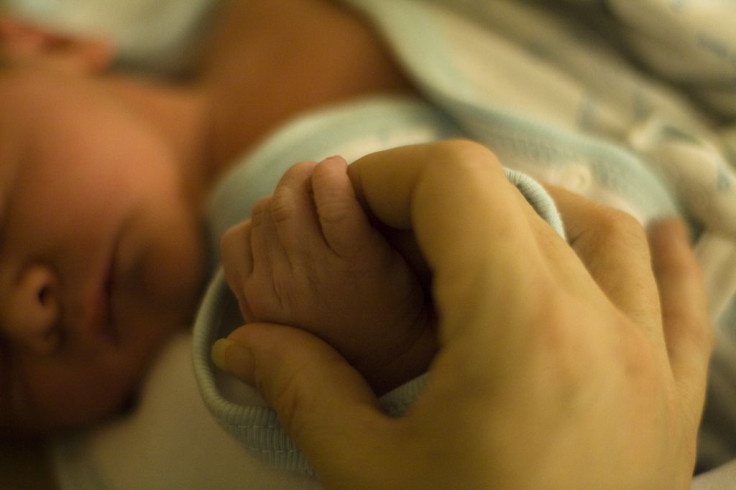An Ovary Transplant After A Cancer Diagnosis Can Preserve Fertility Without Recurrence

Women who have had ovary tissue removed because of cancer may still have hope of becoming pregnant. In a new study, published in Human Reproduction, Danish researchers found that women whose ovaries had been removed and frozen could have successful pregnancies if the ovaries were then transplanted back a few years later. The research, which encompasses a review on the largest series of ovarian transplants internationally, shows that transplantation isn’t only successful, but that the cancer won’t come back either.
Women often have their ovaries removed following a cancer diagnosis, regardless of whether it’s benign or malignant. Doctors do this because they aren’t sure how chemotherapy or radiation treatment for the cancer will affect the ovaries — it might compromise fertility. So, the ovaries are then removed and frozen in hopes that they can be saved, and later transplanted back into the body so that the woman can regain fertility. But up until now, doctors weren’t sure whether transplanting tissue after a cancer diagnosis would reintroduce malignant cells back into the body, taking the patient out of remission.
A team of researchers including Dr. Annette Jensen, Ph.D. student in the Laboratory of Reproductive Biology at the Rigshospitalet in Denmark, and colleagues from Odense University Hospital and Aarhus University Hospital conducted a comprehensive review of Danish women who had undergone transplants in hopes of determining any negative effects.
According to the study, the Danish ovarian transplantation program started in 2000 and involved almost 800 women who had their ovary tissues frozen and preserved. Researchers specifically looked at women who had transplants between the years 2003 and 2014, and thus narrowed their participant pool to 41 women who had undergone a total of 53 transplants over the course of 10 years. The women were an average age of 29.8 when they had their ovary tissue removed, and an average age of 33 when they underwent the transplant.
Overall, researchers observed successful results with few side effects in women who had undergone transplants. Out of the 41 women, 32 said they wanted to become pregnant, with 10 successfully having one or more children. A total of 14 children were conceived, and one woman reported being in her third trimester of pregnancy. The researchers also observed that two legal abortions took place during this time, along with one miscarriage in the 19th week of gestation. Eight of the children conceived following a transplant were done so naturally, while six were conceived with this assistance of in vitro fertilization.
The researchers also observed that the ovaries still seemed viable after being preserved for long periods of time. Out of the 41 women, three said the transplant occurred over 10 years after their ovaries were removed, six patients said it had been more than eight years, and 15 patients said it had been more than five years. The rest of the women said it had been between six months and five years since their tissue was removed.
Because of this, Jensen said the researchers aren’t sure how long ovaries can exist outside of the body while still being transplanted with full function. “The full functional lifespan of grafts is still being evaluated, because many of these women have ovaries that are continuing to function,” she said in a recent press release.
Coincidentally, three women had a recurrence of cancer following the transplant, two of which experienced a relapse of breast cancer at the site of their original tumor, while the other experienced a relapse of Ewing's sarcoma. However, these cases were unrelated to the transplant, and no cases of cancer occurred within the transplanted tissue.
“As far as we know, this is the largest series of ovarian tissue transplantation performed worldwide, and these findings show that grafted ovarian tissue is effective in restoring ovarian function in a safe manner,” Jensen said. She concluded that the researchers observed a pregnancy success rate of about 30 percent, and that the potential to conceive means “an immense, quality-of-life boost for [cancer patients].”
Jensen noted that following up with patients receiving transplants is key to their success, and ensures that malignant cells do not come back. She also said doctors should refrain from doing transplants in women who are diagnosed with leukemia, because they are most susceptible to having the cancer come back following the transplant.
On top of potentially preserving fertility, the researchers also found that reintroducing ovarian tissue into the body maintains levels of sex hormones that could prevent early menopause. “We hope that our results will enable this procedure to be regarded as an established method in other parts of the world, which has an important implication on how it is funded and reimbursed,” Jensen said.
Source: Jensen A, et al. Outcomes of transplantations of cryopreserved ovarian tissue to 41 women in Denmark. Human Reproduction. 2015.
Published by Medicaldaily.com



























